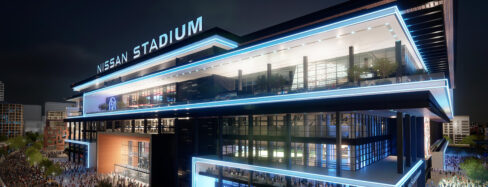As both designers and stewards of our collective built environment, we have high expectations for sustainable design in 2023. In recent years, we have seen trends respond to global shifts in technology, sustainability, and economic factors. This year, there will be even more opportunities, tools, and drivers for greater outcomes.
Many architectural firms have participated in a collective global effort to increase sustainability in design, and many have pledged to the AIA 2030 Commitment, pledging to reduce the environmental impact of buildings, developments, and major renovations by 2030. As a result, many firms are already prioritizing the reduction of energy consumption, utilization of renewable energy sources, and improvement of overall building efficiency to develop net zero buildings. Net zero is still an impressive feat, but, as we approach 2030, many firms are pushing the envelope even further and designing net positive buildings that don’t just break-even but create a surplus of energy.

The path to net positive
While a net-positive orientation is not something unique to the United States, we have seen code-driven economies in the U.S. make this goal a priority and lead the initiative. States like California and Massachusetts have implemented net-zero policies in their public schools. HLB provided lighting design services for the first net zero school and public building in Massachusetts, King Open Elementary School & Library. Our team has also taken part in projects like the NYPL Charleston Library – NYPL’s first net-zero public library. In 2021, forward-thinking Massachusetts delivered its first net-positive school in a town that aims to be carbon-neutral by the year 2035, showing an increasing demand for innovation in this area.
In addition to other methods, like proper insulation, energy-efficient HVAC systems, and water conservation, lighting is an important aspect of energy-efficient design in buildings, as it can account for a sizable portion of a building’s energy consumption. In a net-positive building, lighting design should aim to reduce energy consumption while providing a high level of visual comfort for occupants.
One way we can achieve this is by using daylighting techniques, which utilize natural light to illuminate a building’s interior. Familiar approaches to daylighting include skylights and clerestories, however, good daylighting requires an elevated level of expertise and care. Designers work to balance natural light, solar heat gain, and glare control. Each building requires a highly customized solution designed around its specific location, orientation, and solar availability.
Additionally, using lighting sensors and dimmable lighting can help to reduce energy consumption by ensuring that lights are only on when necessary. Using a combination of LED technology and best practices in lighting controls, such as daylight sensors, occupancy sensors, dimers, multi-scene presets, and fully networked systems can maximize the benefits of LEDs and take an increased amount of energy offline where possible.
Making sustainable attainable
As we continue to navigate 2023, we are mindful of ongoing economic factors and ever-evolving consumer expectations and tastes. Working together with product designers, we continue to push for luminaires that contribute to the support of other energy expenditures. The key to the adoption of these leading-edge technologies will be their aesthetic value – our goal is that occupants don’t necessarily notice the shift and have a natural and effortless experience throughout the building.
One of the most intriguing emerging technologies is the development of rechargeable luminaire components. These components will seamlessly integrate with beautifully designed luminaires and act like a rechargeable battery. Once charged, they can take their energy expenditure offline and use their own stores to maintain energy production until they need to be recharged, at which point they will reconnect to live energy. We have already seen one manufacturer patent a product with this capability and look forward to this technology entering the mainstream market.
To add to the attainability of net zero, we must consider that there are economic benefits to designing with a sustainability mindset, which will be significant in 2023 as we watch the economy shift amongst talks of a recession. Net-positive buildings can generate savings over time by reducing energy costs. Owners of net positive buildings may also see reduced maintenance costs over time and see an increase in resiliency in terms of power outages and disruptions. It continues to be an impactful and positive solution for owners, developers, and designers.
We look forward to all that we can achieve throughout 2023. Together, we can continue to make a positive impression as we take steps that will move our industry and global community forward.



